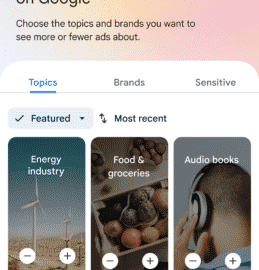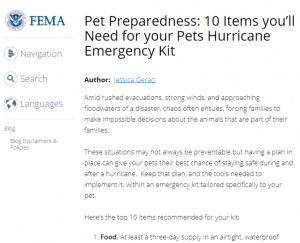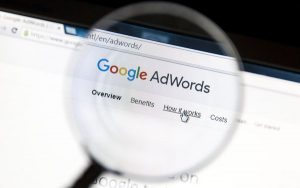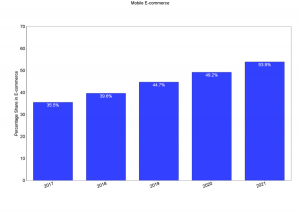My Ad Center will let users block any ad and get info on why they were chosen to see it.
Consumers on Google will soon get more control over the advertising they see. This via the new My Ad Center feature which the search-engine giant unveiled its annual I/O Summit event (May 13, 2022).
My Ad Center is supposed to let users like, share or block any ad across selected Google properties. They’ll also be able to find out who paid for the ad, and why they, specifically, were targeted with it.
Google users will be able to dictate:
- Which brands and topics they like.
- The amount of personalization they are comfortable with for their ad customization.
These personalization options can be accessed from My Ad Center or within the ad itself.
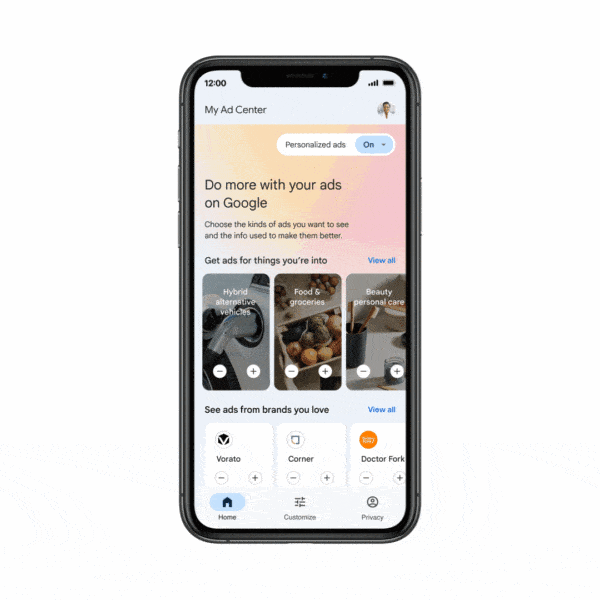
If consumers use it, My Ad Center will give Google ad data. In exchange users will get more control over ads on Google properties including YouTube, Discover and Search. With third-party data going away, the ability to follow brands will provide critical feedback directly to Google.
What we know about My Ads Center right now:
Follow brands and topics. All Google users will now have the ability to choose the brands and topics most germane to them that they want to see. This is much different than the Topics targeting within the Privacy Sandbox now being tested, as the inputs are dictated directly by the user.
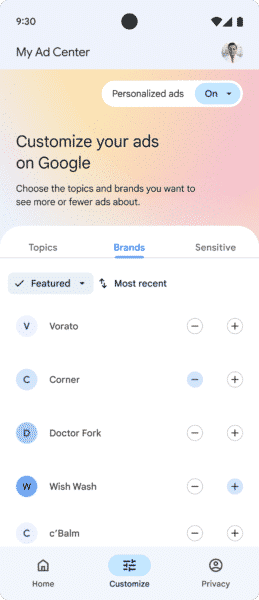
An example provided by Google was that a user interested in a hybrid car may choose this as a topic they’d be interested in and would be served ads related to that particular topic. This can also work with specific brands they like.
Personalization and data source controls. My Ad Center is designed to provide a single place where users can limit any/all information used for ad personalization, including age, relationship status, education and demographic data. Users can also limit or opt-out of sensitive ad topics (e.g., gambling, alcohol, dating, weight loss, and pregnancy & parenting).
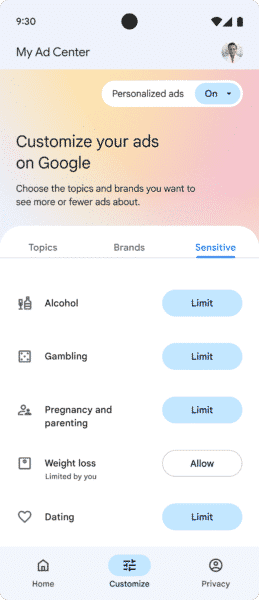
It also gives consumers control over the data sources used. Users will be able to choose which data sources can be used to personalize ads and which sources should be used across some Google properties (e.g., personalized search, YouTube recommendations).
Expanded controls within ads. While My Ad Center is nice, let’s be honest, sometimes people just want to make changes immediately when they see an ad. Those folks are in luck. They will be able to make changes or get targeting clarity directly within the ad. The new controls will allow users to like, block or report an ad, while also being able to tune the targeting if they’d like to see more or less of the brand or topic shown.

However, the biggest change for advertisers may be the transparency features included directly within the ad controls. The “About this ad” is being replaced with the new transparency features that show who paid for the ad (using Advertiser Identity Verification) and the account categories used to show the specific ad. This is very different from the “Why this ad” feature. It displayed matching criteria but not who paid for it.
Not all of Google. At launch My Ad Center will only work for Google search, YouTube and Google Discover and not for the Google Display Network, Gmail or Search Partners (yet). There is also expected to be a second ad settings page, separate from My Ads Center, for sites that partner with Off-Google ads (ie the Google Display Network).
The topics or brand updates inputted into the My Ads Center won’t initially be passed to this new second ad settings page. However, if ad personalization is shut off entirely within My Ads Center that will shut off all personalization across all Google-owned and non-Google-owned properties.
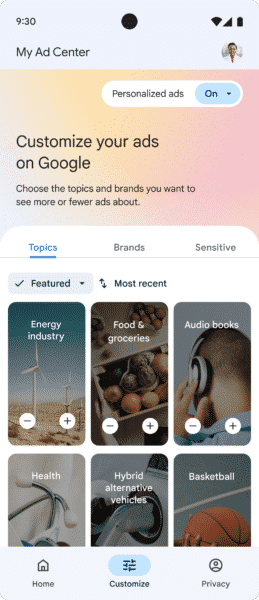
Why we care: This is potentially a win/win for marketers and consumers, as well as a big step up on privacy by Google. The brands and topics to follow could provide marketers with a lot of data about people interested in their products. Interested users will have easy access to who is paying for an ad and why they were targeted (which will also be of interest to competing marketers). They will also have a simple way to shut off ad targeting on Google and many non-Google sites. It will be fascinating to see how many people actually use it when it becomes available.
Read next: 3 challenges of building customer trust in a privacy-focused world
The post Google giving users greater control over what ads they see appeared first on MarTech.
(23)
Report Post